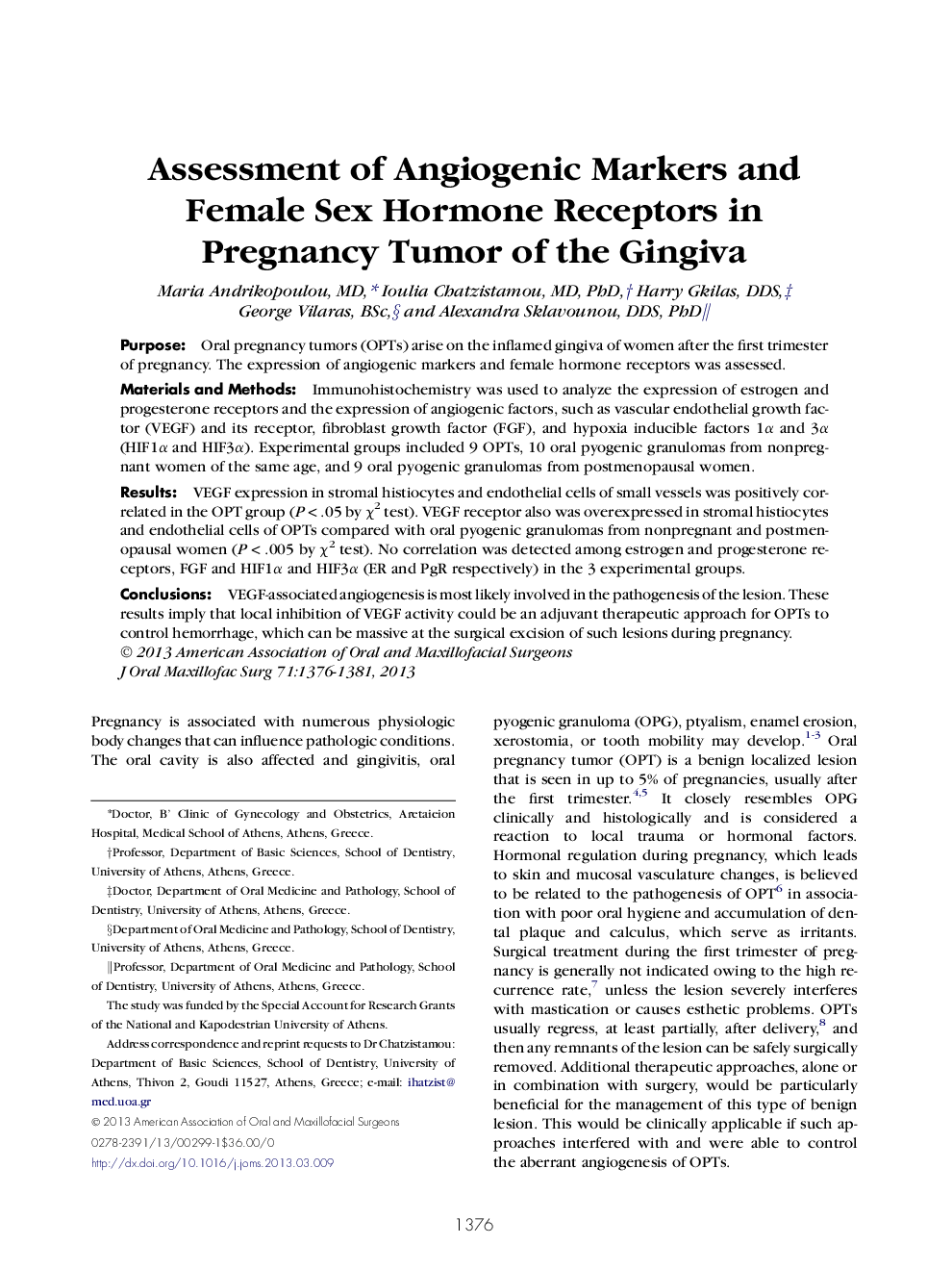| Article ID | Journal | Published Year | Pages | File Type |
|---|---|---|---|---|
| 3153244 | Journal of Oral and Maxillofacial Surgery | 2013 | 6 Pages |
PurposeOral pregnancy tumors (OPTs) arise on the inflamed gingiva of women after the first trimester of pregnancy. The expression of angiogenic markers and female hormone receptors was assessed.Materials and MethodsImmunohistochemistry was used to analyze the expression of estrogen and progesterone receptors and the expression of angiogenic factors, such as vascular endothelial growth factor (VEGF) and its receptor, fibroblast growth factor (FGF), and hypoxia inducible factors 1α and 3α (HIF1α and HIF3α). Experimental groups included 9 OPTs, 10 oral pyogenic granulomas from nonpregnant women of the same age, and 9 oral pyogenic granulomas from postmenopausal women.ResultsVEGF expression in stromal histiocytes and endothelial cells of small vessels was positively correlated in the OPT group (P < .05 by χ2 test). VEGF receptor also was overexpressed in stromal histiocytes and endothelial cells of OPTs compared with oral pyogenic granulomas from nonpregnant and postmenopausal women (P < .005 by χ2 test). No correlation was detected among estrogen and progesterone receptors, FGF and HIF1α and HIF3α (ER and PgR respectively) in the 3 experimental groups.ConclusionsVEGF-associated angiogenesis is most likely involved in the pathogenesis of the lesion. These results imply that local inhibition of VEGF activity could be an adjuvant therapeutic approach for OPTs to control hemorrhage, which can be massive at the surgical excision of such lesions during pregnancy.
